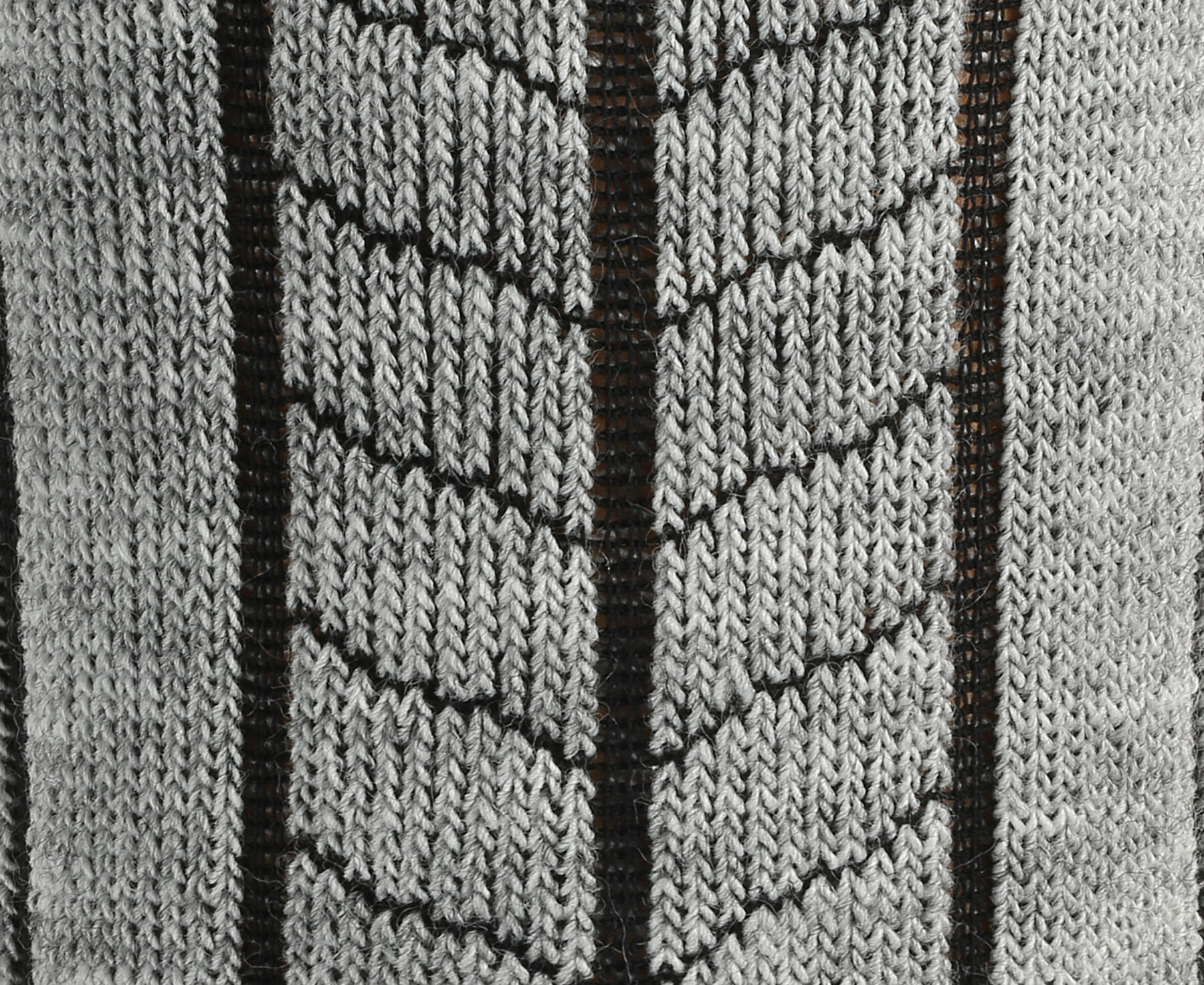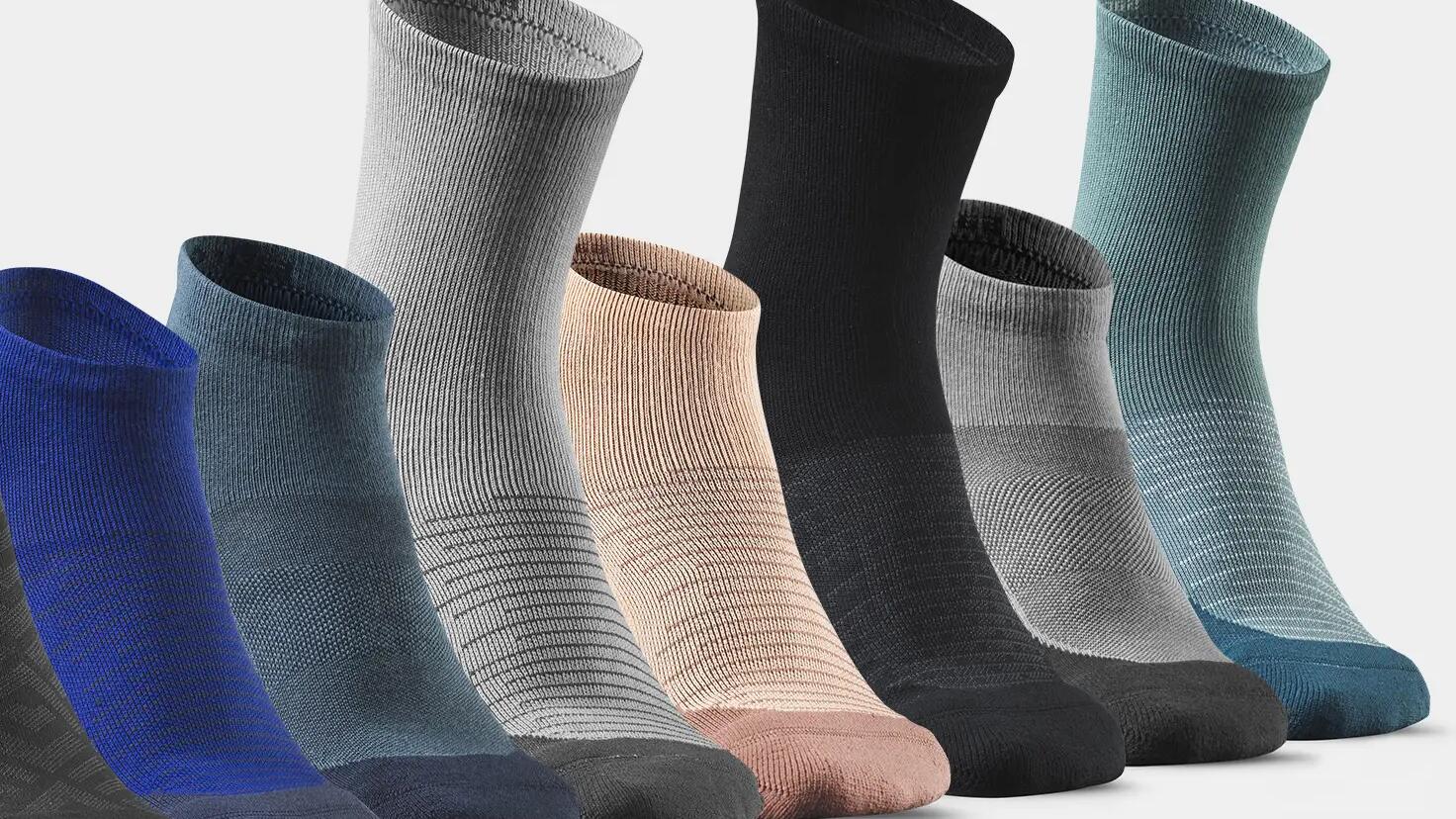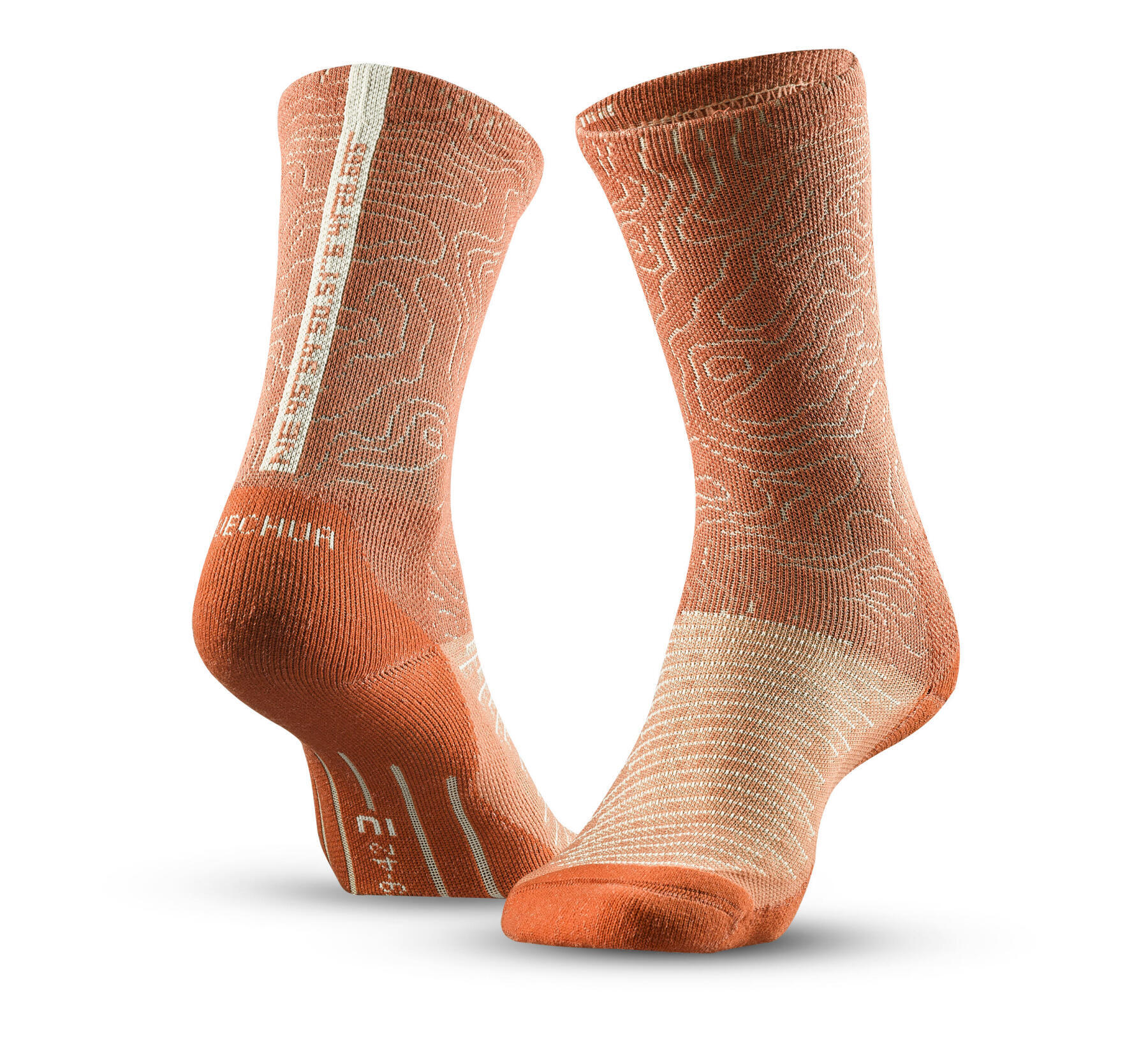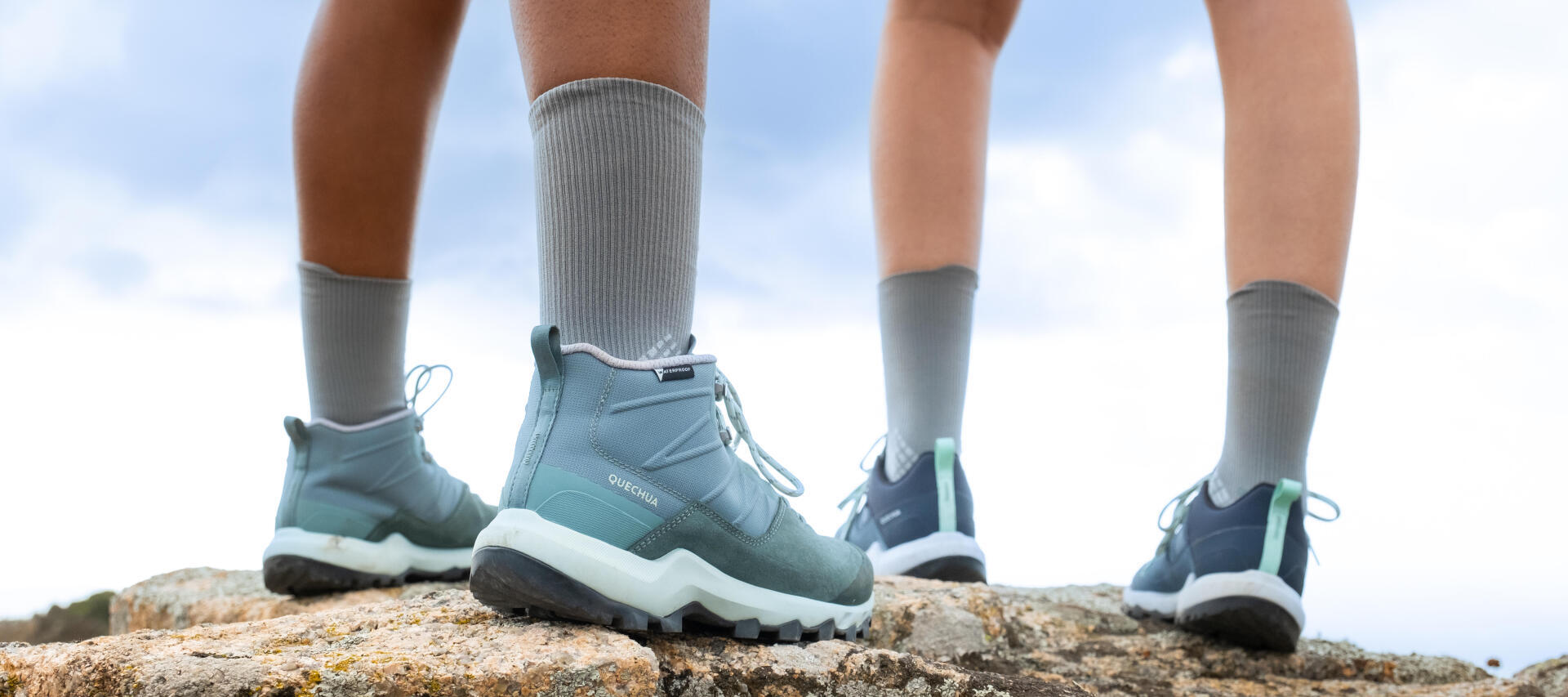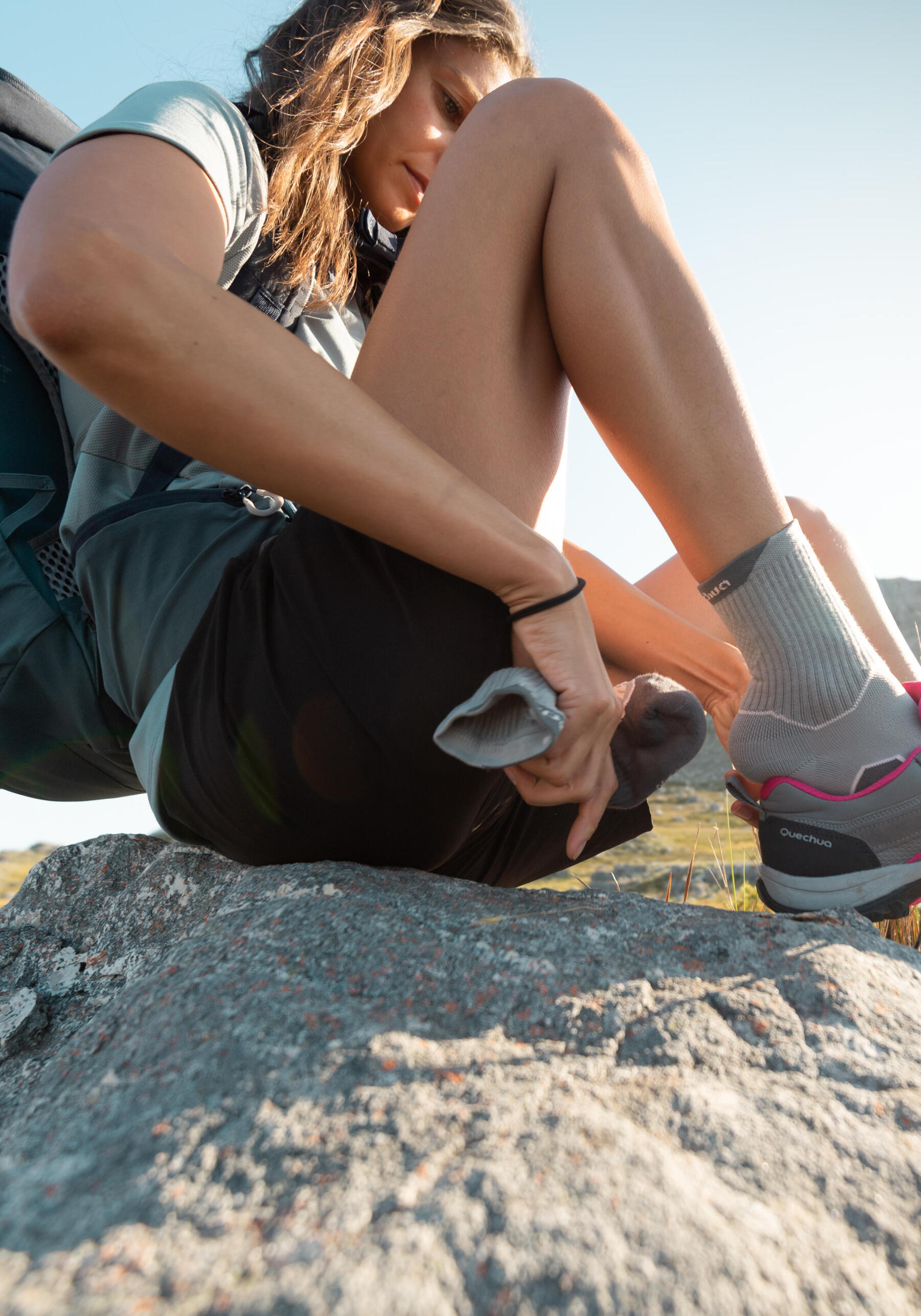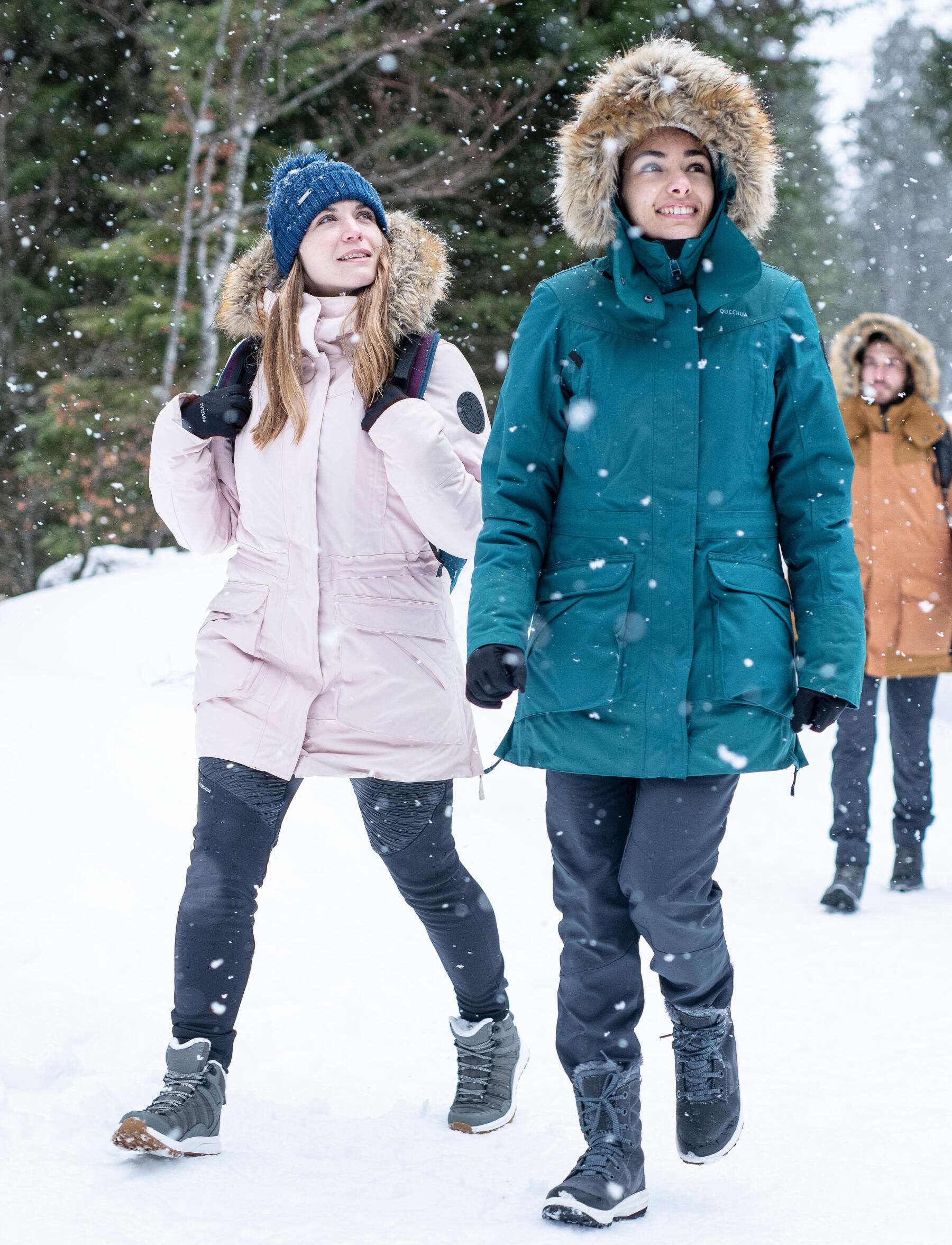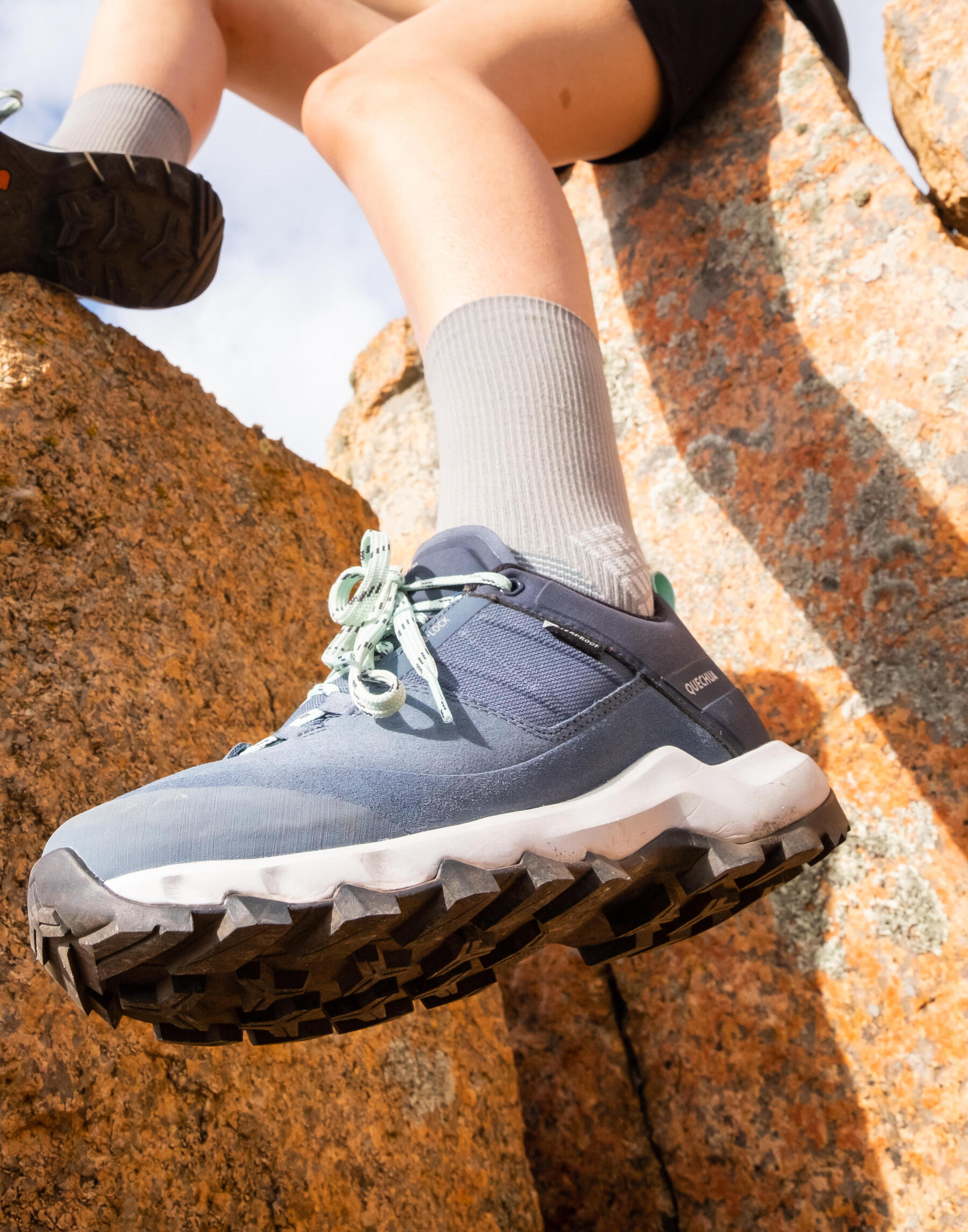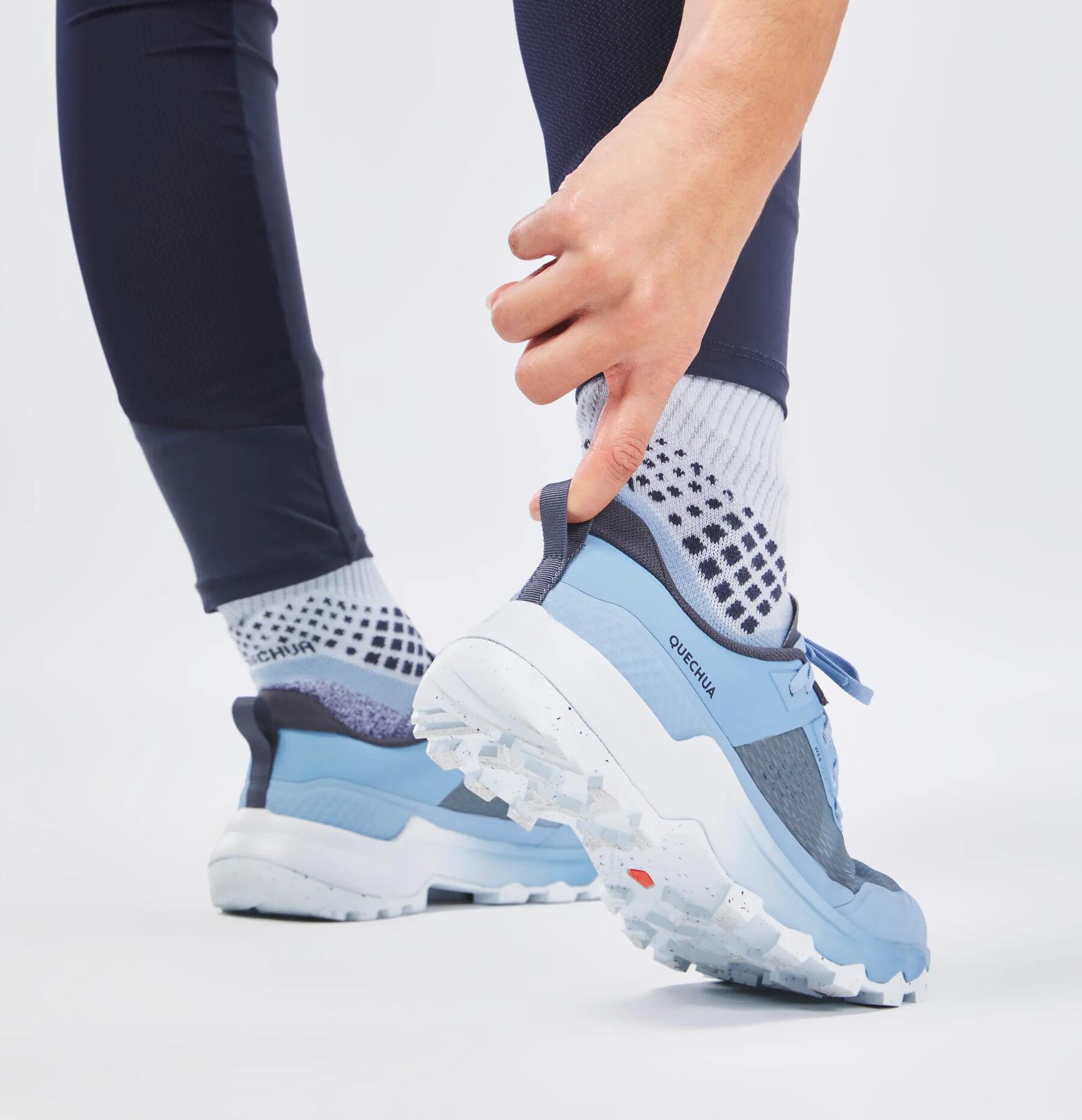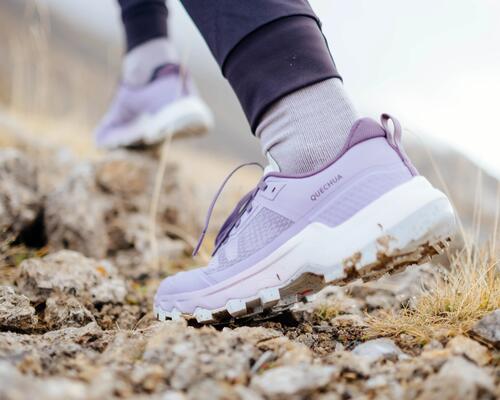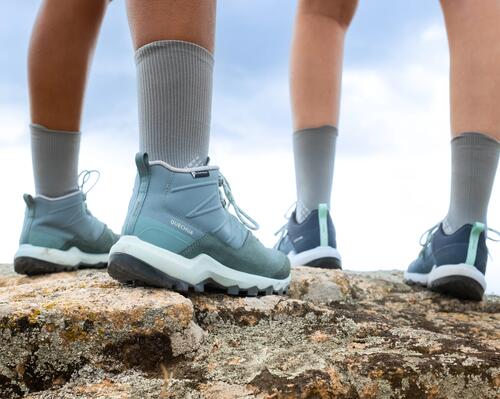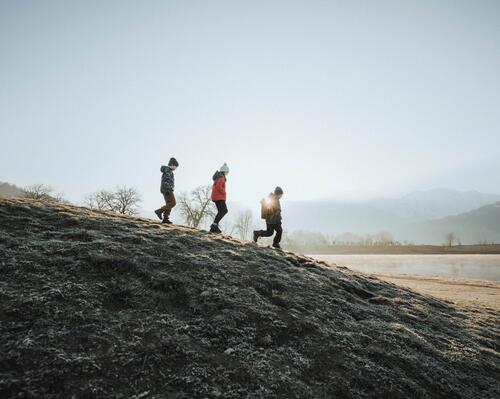Socks that are more or less breathable depending on the intensity of your effort
Who said hiking wasn't a sport? You will sometimes sweat or feel breathless (because of the view, or because of the slope you have just climbed... the two are still not easy to distinguish).
Depending on the intensity of your walk, and therefore the possible sweating and friction of your feet in your shoes, you will need to look at different sock models, even if your walk is not that long.
We are not all equal when it comes to perspiration (whether in total quantity or in more or less prolific "areas"...).
If you don't sweat much on your feet, breathability will be less important for you. If, on the other hand, you are prone to perspiration, even when the effort is not very intense and the outside temperature is not so high, then you will have to turn to breathable socks even for a short walk in the forest.
Indeed, if you sweat a lot, and your foot stays in a humid environment, you increase your chances (well, rather your risks) of getting blisters due to maceration.
At Decathlon, we offer you socks that encourage perspiration wicking thanks to the "Air-Conditioning Channel®".
The synthetic fibre that makes up the structure of the sock is fine and ventilated which provides better moisture wicking! Indeed, beyond the material, it’s above all the way in which the mesh is made that will bring other advantages (including breathability) to a fabric.
If you are curious, you should know that the breathability of a fabric can be measured!
From its little name "Thermal Evaporative Resistance" (or "R.E.T." to friends), this measurement means we can compare different materials according to their resistance to moisture wicking. Like in golf, the lower the R.E.T. Score, the better it is! This means that the fabric provides very little resistance to moisture wicking and is therefore breathable. To find out more, we've put together a short article on material breathability. Indeed, breathability affects other hiking clothes such as T-shirts, jumpers or even jackets!



